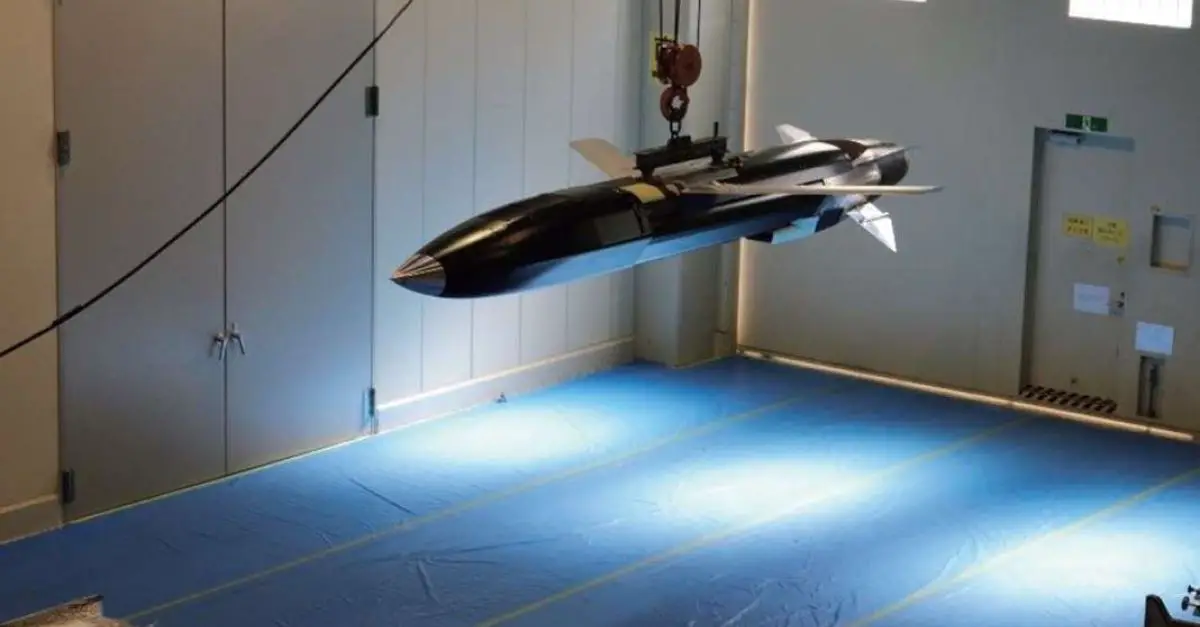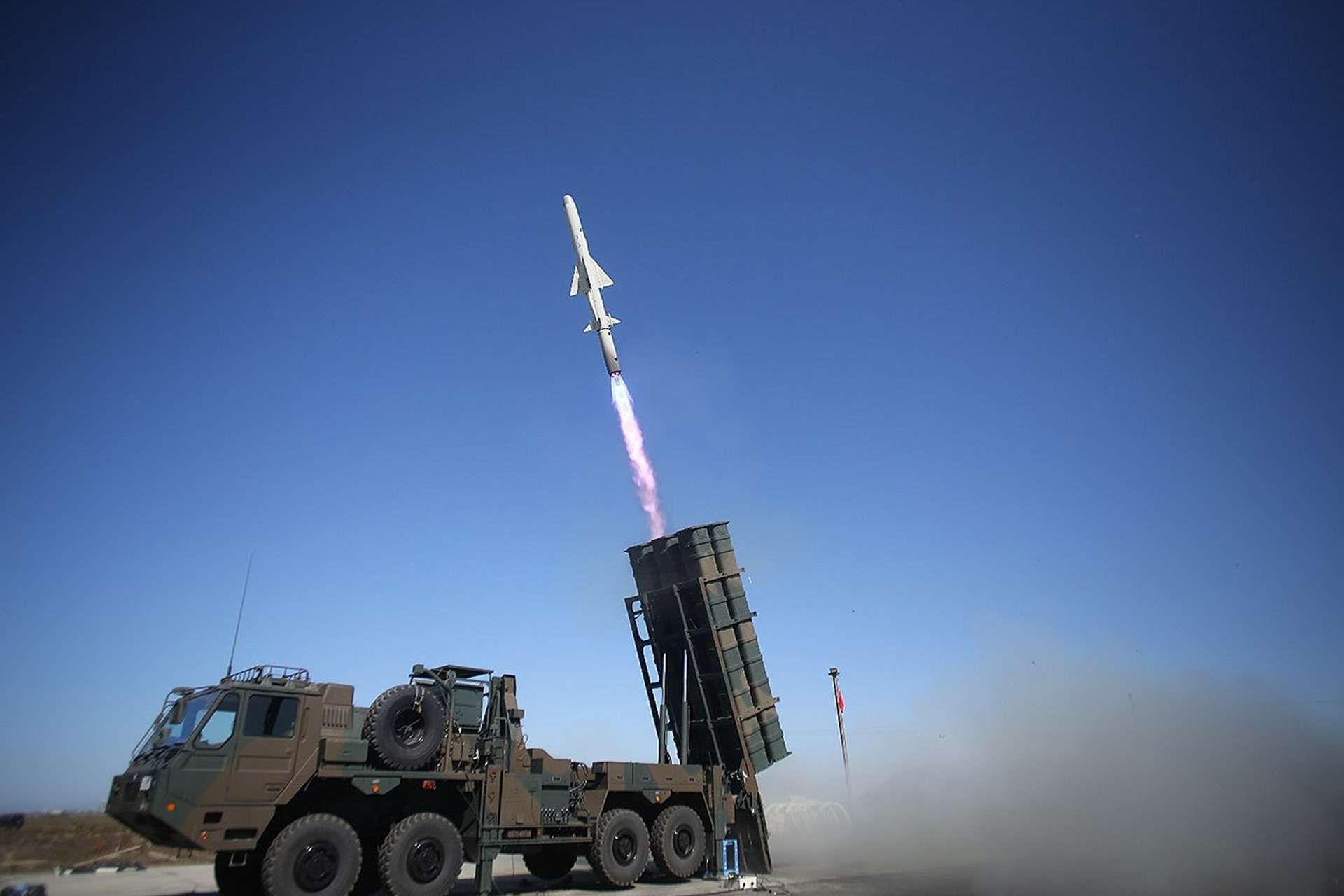Breaking News
Japan reveals upgraded Type 12 surface-to-ship missile with extended range and stealth design.
In its annual White Paper published on July 5, 2024, the Japanese Ministry of Defense provided an overview of its current and future defense initiatives, along with a new image of the improved Type 12 Surface-to-Ship Missile (SSM) prototype from Mitsubishi Heavy Industries. This development is part of Japan's strategy to enhance its national defense architecture, focusing on capabilities to disrupt and defeat invading forces over long distances, thereby deterring potential invasions.
Follow Army Recognition on Google News at this link

The development of an upgraded Type 12 surface-to-ship missile is part of Japan's strategy to enhance its national defense architecture, focusing on capabilities to disrupt and defeat invading forces over long distances, thereby deterring potential invasions. (Picture source: Mitsubishi Heavy Industries)
On December 18, 2020, the Japanese Ministry of Defense approved the development of an improved version of the Type 12 Surface-to-Ship Missile (SSM). This new version aims to extend the missile's range from 200 kilometers to 900 kilometers initially, with a future target of 1,500 kilometers. Like the AGM-158 JASSM and the Storm Shadow/SCALP cruise missiles, the upgraded Type 12 SSM will feature a stealthier design to reduce radar cross-section (RCS) and increase mobility to evade interception. The upgraded missile will be capable of targeting both naval vessels and ground targets and will be deployable from ground-based platforms, naval vessels, and aircraft. Development of this improved version is expected to be completed by the fiscal year 2025. Additionally, the upgraded Type 12 SSM will likely retain the improved rearward-angled primary wings and X-shaped tail fins seen in this picture to enhance stability and aerodynamic performance.
Key aspects of this strategy include the advancement of stand-off defense capabilities. The deployment of the upgraded Type 12 SSM has been moved forward from the fiscal year 2026 to 2025. Similarly, the acquisition timeline for Tomahawk missiles has been expedited from FY2026 to FY2025. The upgraded Type 12 SSM has undergone various trials and will likely equip Japan's future Aegis System Equipped Vessels (ASEV), which are 190 meters long, 25 meters wide, and have a standard displacement of 12,000 tons. These vessels can accommodate 240 crewmembers and are equipped with 128 Vertical Launch System (VLS) cells for missiles such as the SM-6, SM-3 Block IIA, and Tomahawk.
Integrated air and missile defense capabilities are also being strengthened. Japan is cooperating with the United States on the development of the Glide Phase Interceptor (GPI) to counter hypersonic glide vehicles (HGVs). As part of this cooperation, Japan is also procuring various interceptors, including the SM-3 Block IIA, SM-6, and PAC-3MSE. To support these capabilities, Japan is improving its sensor network by enhancing the FPS-5 radar system and the Japan Aerospace Defense Ground Environment (JADGE), as well as developing hyper-velocity gliding projectiles for the defense of remote areas, in collaboration with Mitsubishi Heavy Industries, Ltd. These projectiles are designed to enhance Japan's ability to respond to threats in remote areas.

The Type 12 Surface-to-Ship Missile, developed by Japan's Mitsubishi Heavy Industries in 2012, provides an operational range of approximately 200 kilometers. (Picture source: Japanese MoD)
The Type 12 Surface-to-Ship Missile, developed by Japan's Mitsubishi Heavy Industries in 2012, is an advanced truck-mounted anti-ship missile system that builds upon the previous Type 88. This system, in service since 2015, weighs 700 kg and measures 5 meters in length, with a diameter of 350 mm. It utilizes an Inertial Navigation System (INS) with mid-course GPS guidance and Terminal Active Electronic Scanned Array (AESA) radar homing, providing an operational range of approximately 200 kilometers.
The Type 12 missile includes several notable improvements such as enhanced Terrain Contour Matching, target discrimination capabilities, shorter reload times, and reduced lifecycle costs. It is networked for initial and mid-course targeting from other platforms, increasing its operational effectiveness. The missile's Ka-band AESA radar seeker is also used in the Japanese Beyond Visual Range Air-to-Air Missile (BVRAAM), the AAM-4B, enhancing its targeting accuracy. It can be launched from trucks manufactured by Oshkosh and Mitsubishi.
A ship-launched variant, the Type 17 (SSM-2) missile, has been introduced and deployed from Maya-class destroyers, with an extended range of 400 kilometers. An air-launched variant for the P-1 patrol aircraft is also planned, aimed at increasing operational flexibility.
Deployment of the Type 12 began in the fiscal year 2012 within the Japan Ground Self-Defense Force (JGSDF), initially for training and maintenance purposes. By the fiscal year 2015, operational units started receiving the missile system, with the 5th Surface-to-Ship Missile Regiment of the Western Army Artillery Unit being a significant recipient. The deployment includes search and location radar equipment, command and control units, fire control systems, and launcher vehicles, each carrying six guided missiles.


























